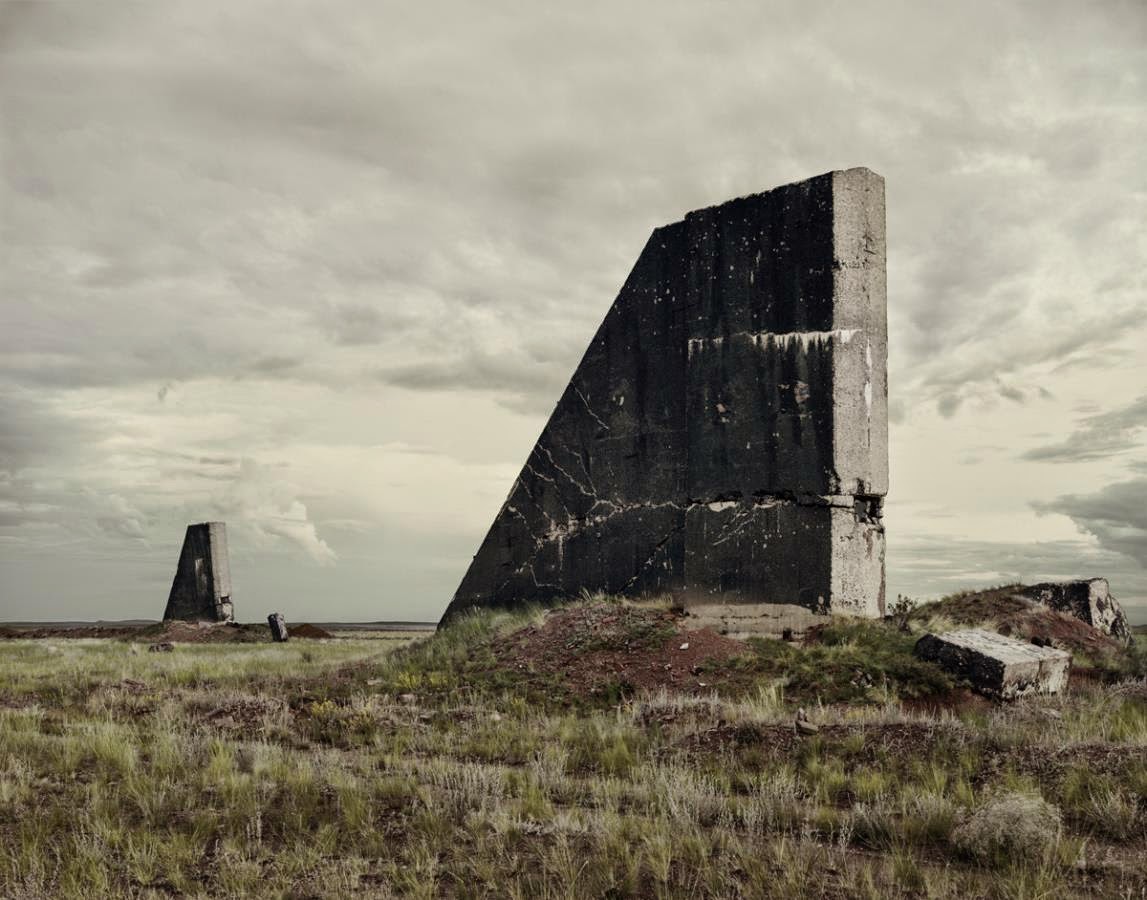Empty Landscapes of Invisible Dangers
 [Image: "The Polygon Nuclear Test Site 1 (After the Event)," Kazakhstan (2011); photo by Nadav Kander/©Nadav Kander, courtesy of Flowers Gallery].
[Image: "The Polygon Nuclear Test Site 1 (After the Event)," Kazakhstan (2011); photo by Nadav Kander/©Nadav Kander, courtesy of Flowers Gallery].The new book Dust by Nadav Kander documents the broken test-cities of the Soviet nuclear program, with shells of partially dismantled buildings lying scattered across the landscape like dead monuments, anonymous and unsigned.
 [Image: "The Polygon Nuclear Test Site VII," Kazakhstan (2011); photo by Nadav Kander/©Nadav Kander, courtesy of Flowers Gallery].
[Image: "The Polygon Nuclear Test Site VII," Kazakhstan (2011); photo by Nadav Kander/©Nadav Kander, courtesy of Flowers Gallery].As the Guardian describes Kander's work—which opened just last week at London's Flowers Gallery—the "desolate is rendered sublime—almost too perfect—in these epic images of a land laid waste by Soviet nuclear ambitions."
What you're looking at are, in the gallery's words, "the radioactive ruins of secret cities on the border between Kazakhstan and Russia," architectural targets now collapsing wall by wall into the barren plain.
 [Image: "Priozersk (Military Housing)" Kazakhstan (2011); photo by Nadav Kander/©Nadav Kander, courtesy of Flowers Gallery].
[Image: "Priozersk (Military Housing)" Kazakhstan (2011); photo by Nadav Kander/©Nadav Kander, courtesy of Flowers Gallery].The region they're in was known simply as the "Polygon," a suitably abstract designation for what was essentially a nuclear sacrifice zone. From the gallery:
Priozersk (formally known as "Moscow 10") and Kurchatov are closed cities, restricted military zones, concealed and not shown on maps until they were "discovered" by Google Earth. Enlisted to the pursuits of science and war, the sites were utilized for the covert testing of atomic and long distance weapons. Falsely claimed as uninhabited, the cities, along with nearby testing site "The Polygon" set the stage for one of the most cynical experiments ever undertaken. Scientists watched and silently documented the horrifying effects of radiation and pollution on the local population and livestock.Kander's photos are on display until October 11, but you can also buy the book from publisher Hatje Cantz.
 [Image: "The Aral Sea I (Officers Housing)," Kazakhstan (2011); photo by Nadav Kander/©Nadav Kander, courtesy of Flowers Gallery].
[Image: "The Aral Sea I (Officers Housing)," Kazakhstan (2011); photo by Nadav Kander/©Nadav Kander, courtesy of Flowers Gallery].In the meantime, be sure to check out the gallery's website for many more photos, and the artist's own portfolio includes other series well worth a look, such as photos from the Arctic Circle, from the ruins of Chernobyl, and even a fantastic, David Lynchian project called "Night," featuring all but depopulated suburban landscapes lit up by street lamps and garages.
(Note: This post's title—"empty landscapes of invisible dangers"—comes from Nadav Kander, as quoted in the Flowers Gallery press release).





Comments are moderated.
If it's not spam, it will appear here shortly!
That first one looks like something out of Oblivion. Amazing.
Post a Comment